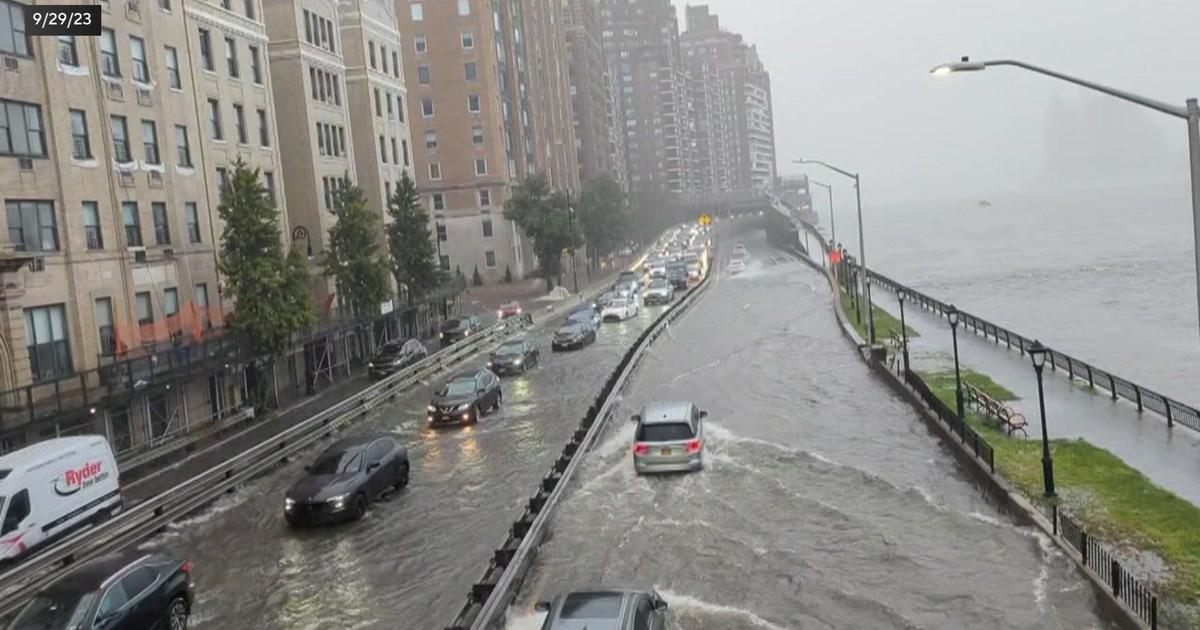"Food Deserts" remain big problem in more than 2 dozen New York City neighborhoods
NEW YORK -- Nearly one month after the racist mass shooting at a Buffalo supermarket, there is pain surrounding gun violence and renewed outrage over an issue that affects millions of people: food insecurity.
On Buffalo's east side, the predominantly Black community fought for years to get the full-service grocery store.
As CBS2's Lisa Rozner investigates, the inequitable access to healthy and affordable food is something that more than two dozen neighborhoods in New York City experience every day.
In some parts of the Bronx, there are more than 35 bodegas for every supermarket, according to the city's Food Policy Center.
In High Bridge, the Latino Pastoral Action Center hands out 40 boxes of fresh fruits and vegetables within minutes.
"The only affordable store around here is the Family Dollar," resident Andre Horton said.
FLASHBACK: Fighting Food Insecurity: Officials Say Summer Meals Program Now Expanded To Any New Yorker In Need
Inside a Dollar Tree, next to a supermarket, Rozner found residents stocking up on eggs, which are located at the bottom of the frozen foods section.
Across the aisle at eye level are processed foods like macaroni and cheese. With inflation, Pastor Esteban Rivera says constituents with food stamps are struggling.
"For a single person, they get under $200. They say by the 15th, 16th of the month they're out of food stamps," Rivera said.
The shaded areas on the map above indicate where access to fresh, healthy food is limited. Across the five boroughs, 10 neighborhoods have more than 25 bodegas to every supermarket, and almost 20 neighborhoods have upwards of 15 bodegas to every supermarket. Most of the corner stores are the best option for working families. They keep high sugar foods like candy and chips prominently displayed.
"And that's what's open when they get home from the second or third job," said Nicholas Freudenberg, director of CUNY Urban Food Policy Institute.
The U.S. Department of Agriculture refers to neighborhoods where junk food options inundate healthy alternatives as "food swamps."
"Food deserts" are places where at least one-third of the population is more than half a mile from the nearest supermarket. In Buffalo, the Tops supermarket filled that gap until the attack last month. It has been closed since.
"This could have been any community," said Rev. Dr. David Jefferson of Metropolitan Baptist Church. "I believe that we need more supermarkets, but like Dr. King said, give people access to more supermarkets, but they don't have money to purchase food."
"There are different food systems for poor people," Freudenberg said. "For example, our School of Public Health is located in Central Harlem. A Whole Foods opening in Central Harlem didn't for most Harlem residents change their food choices because the price point at Whole Foods was not within their budget."
READ MORE: Newark schools unveil breakfast cart program to reduce food insecurity
Food policy experts say access isn't always the problem. Educating the community about what foods are healthier is also a challenge.
"We did a study at our institute, looking at the prevalence of street level, unhealthy food marketing, the billboards and signs, and we found that the ratio of unhealthy food to healthy food was twice as high in the South Bronx and Harlem," Freudenberg said.
In New York City, Bronx Works has partnered with eight supermarkets and bodegas to increase visibility of healthy options with signage and offering grocery store tours.
Other initiatives include hundreds of New York City green carts selling fruits and vegetables at a reduced price.
High Bridge resident Brenda Gibson said it costs "$1.50 for the whole big pack."
The $39 million "hub" is under construction in Hunts Point and is expected to increase the city's distribution of fresh food to areas in need from 2 million pounds a year to 20 million. A program called Fresh offers tax incentives for opening a new supermarket.
"So if the mayor were to come to you today and say, what do I need to change?" Rozner said.
"Each of those programs, you've mentioned needs to be increasingly funded and brought to scale," Freudenberg said. "Look for ways to take on unhealthy food marketers. I would recommend making sure that there were public drinking fountains in every park, in every school. Just a few companies control the vast majority of our food supply, so the federal government could do a better job of enforcing the laws around monopoly."
He said money needs to be poured into the root of problem -- increasing access to housing and jobs, adding subsidies are not the solution, but for now, those partnerships are how people are getting by.
There is state legislation that has been introduced that would prevent fast food companies from promoting unhealthy food in public spaces.
Meanwhile, in Buffalo, the Tops supermarket is anticipated to reopen by the end of July. Since last month's shooting, residents have been taking a shuttle bus the supermarket chain provided to get to another location.





